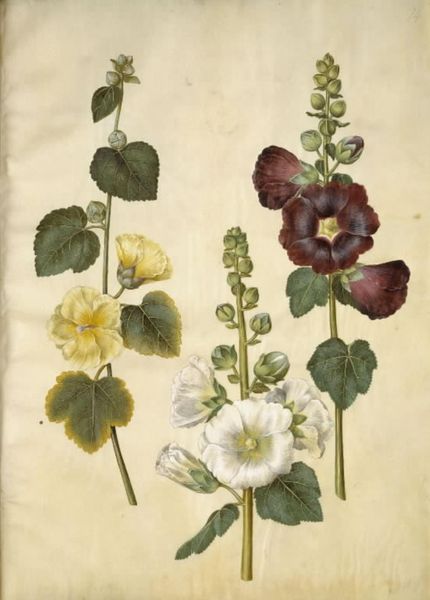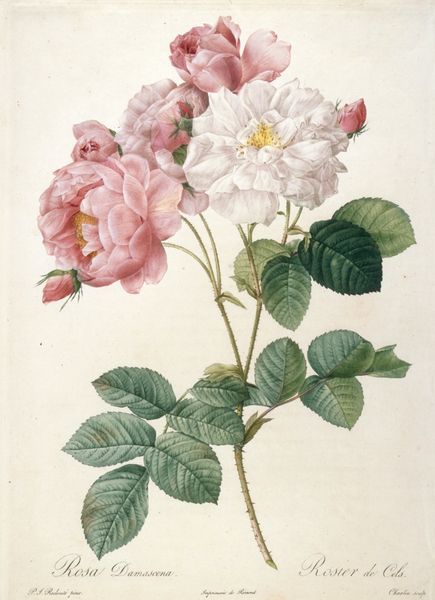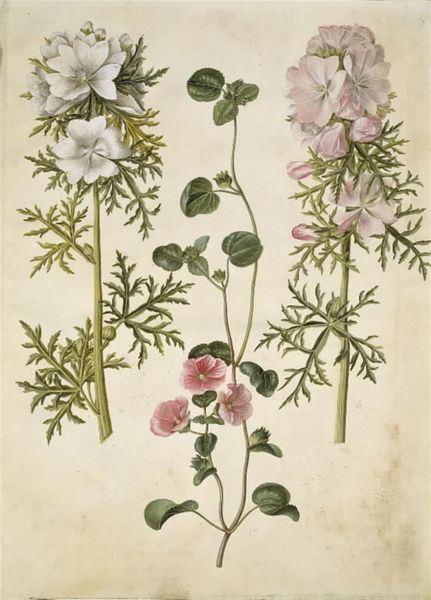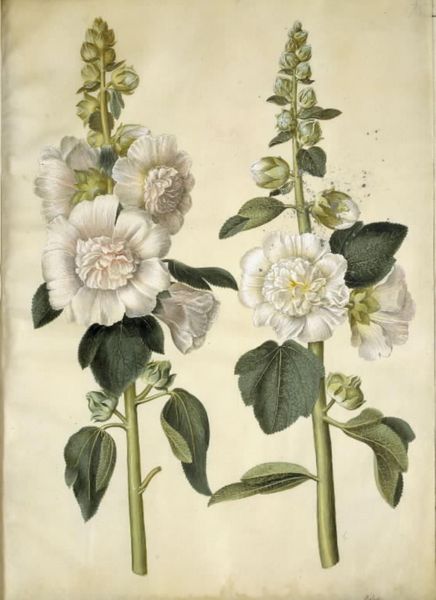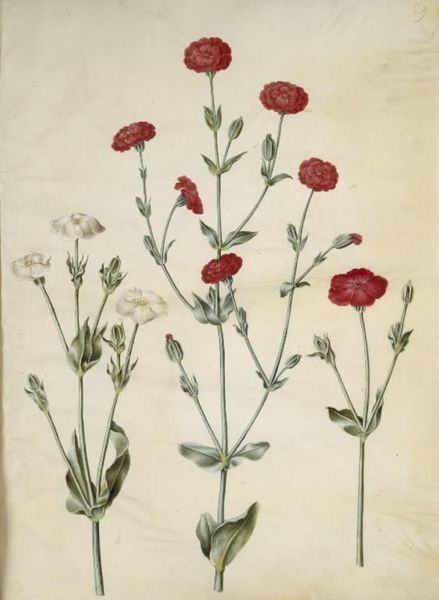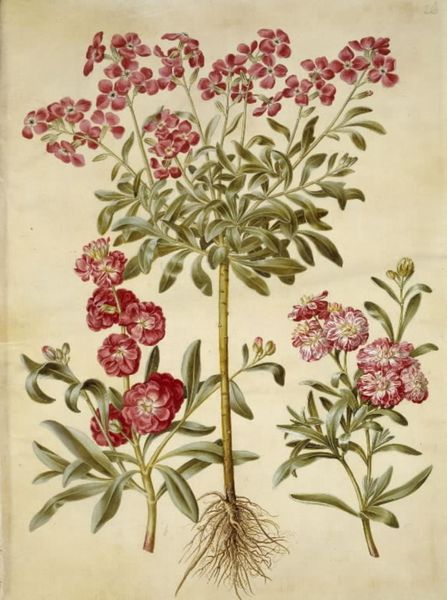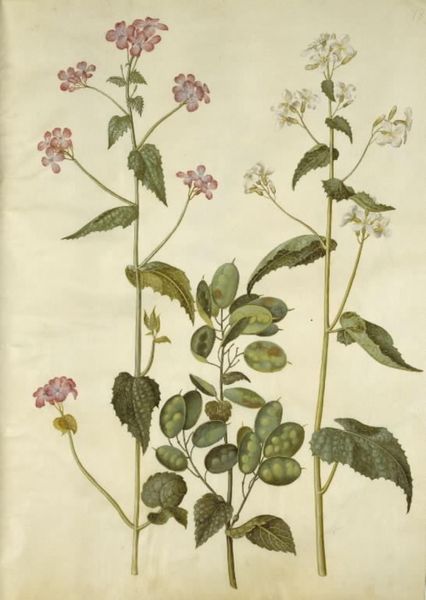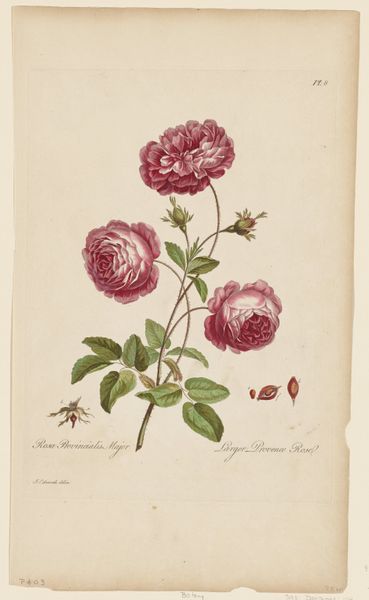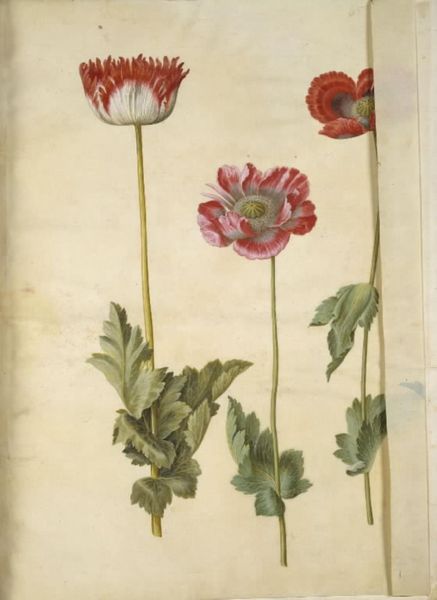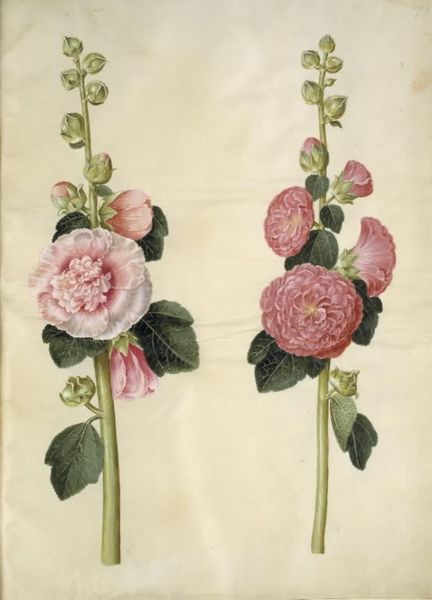
drawing, gouache, watercolor
#
drawing
#
gouache
#
oil painting
#
watercolor
#
watercolour illustration
#
academic-art
Dimensions: 505 mm (height) x 385 mm (width) (bladmaal)
Curator: Before us, we have "Alcea rosea (have-stokrose)," a gouache and watercolor drawing created sometime between 1649 and 1659 by Hans Simon Holtzbecker. It’s part of the collection at the SMK, the Statens Museum for Kunst. Editor: It’s visually quite striking; the density of the layered petals almost feels opulent. But there’s also a static quality. It almost looks pressed. Curator: Holtzbecker was known for botanical illustration, a discipline highly valued during the period for its contribution to scientific knowledge. The medium of gouache on paper itself is quite interesting; pigments were sourced widely. It required a deep knowledge of materials, right down to the source of the gum arabic that held the paint together. Editor: Exactly. Considering its purpose, it reflects a growing fascination with the natural world fueled by colonialism and trade. How are these botanicals implicated in systems of power? Were they simply passive objects, or active agents in these exchanges? Holtzbecker and his patron were surely part of these global power dynamics, representing a perspective that reflects certain biases. Curator: True, the acquisition and representation of such specimens facilitated exploitation on multiple levels. Still, I am particularly drawn to the detail rendered. Note how the differing light refracts on the leaves of the Alcea Rosea specimens. It makes you wonder what was in demand when botanical illustrators acquired supplies, and if a hierarchy of supplies affected their work, especially since Holtzbecker, during his career, also designed playing cards and other things. Editor: We need to remember that Holtzbecker was probably aware of broader theoretical frameworks shaping perceptions. Art during his time also sought to classify and define elements within a set visual culture. It reminds me how Linnaeus developed his system of classifying plants and animals during the 18th century, further shaping and creating social meaning. Curator: That system was a tool that was then applied in a variety of contexts and the artwork too provides clues. Consider the scale of Holtzbecker’s drawings—meant for a book perhaps, and likely to be disseminated among a wealthy network. Editor: Holtzbecker’s ‘Alcea rosea’ reveals so much: about botanical classification, and our cultural fascination, even fetishization, of the natural world. Curator: And also about the processes and materials used to bring nature to our eye.
Comments
No comments
Be the first to comment and join the conversation on the ultimate creative platform.

